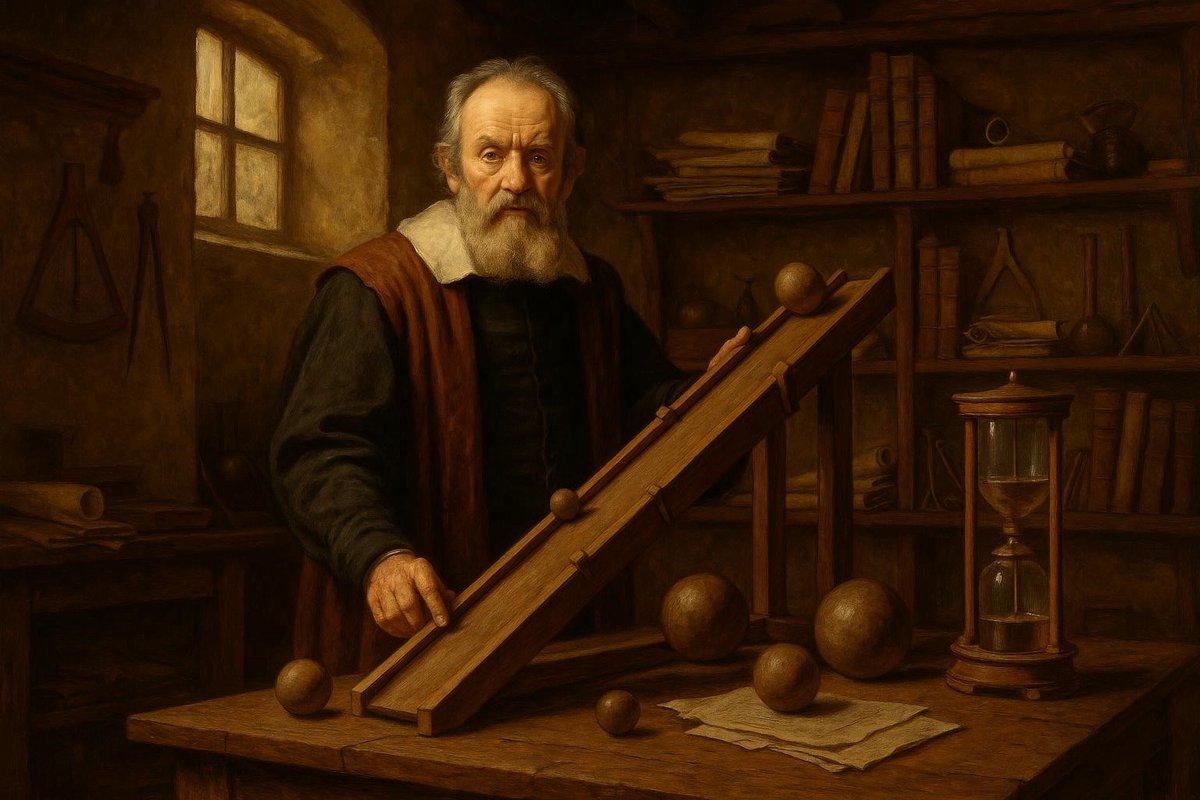
Introduction
Have you ever wondered why a ball rolls down a slope but stops on a flat surface? This simple observation puzzled thinkers for centuries. It was not until the early 17th century that an Italian polymath, Galileo Galilei, ventured to challenge long-held assumptions and illuminate the principles of motion. His experiment with an inclined plane marked a turning point in the evolution of scientific inquiry, transitioning from theoretical musings to empirical validation.
Hypothesis & Context
In Galileo’s time, Aristotelian physics dominated, positing that objects moved differently based on their nature and the medium they traversed. Aristotle believed heavier objects fell faster, a notion that lingered for nearly two millennia. However, as the Renaissance sparked an intellectual awakening, many began to question such axioms.
- Galileo hypothesized that uniform acceleration, not object weight, influenced motion.
- He sought to demonstrate that motion could be quantified through controlled experimentation.
Interestingly, Galileo’s approach reflected broader societal shifts towards valuing observation and evidence over authority. As trade and exploration expanded horizons, so too did the willingness to challenge established norms. The time was ripe for a methodological revolution in science.
Setup & Method
Galileo’s experiment was elegantly simple yet profound in its implications. He constructed a wooden ramp, painstakingly polished to reduce friction, and marked with equidistant lines. By rolling spheres down this inclined plane, he could measure time using a water clock—a novel method for precision.
- He released spheres from various heights and meticulously recorded their descent times.
- By adjusting the incline, he explored how angle and distance impacted velocity.
This meticulous setup allowed Galileo to observe and record consistent patterns in motion. His ingenious use of the inclined plane removed the confounding variable of air resistance, isolating gravity’s influence. Through this, he laid foundational groundwork for the study of dynamics, fundamentally altering our understanding of motion.
Results & Reactions
The results were revolutionary. Galileo demonstrated that acceleration was constant for any given incline, independent of the object’s weight. His findings contradicted Aristotelian physics, which had insisted on a natural speed for every object.
- He famously noted, “Nature’s book is written in the language of mathematics.”
- Galileo’s peers were skeptical, sparking debates across Europe.
Yet, as time went on, his experimental evidence proved compelling. This paradigm shift from speculative reasoning to data-driven conclusions inaugurated a new era of scientific thought. The community began to embrace the idea that mathematics could describe physical phenomena, paving the way for Newton’s later work on motion and gravity.
Implications
Galileo’s inclined plane experiment was more than a technical success; it symbolized a new scientific methodology. By emphasizing empirical evidence over philosophical doctrine, he inspired countless others to apply experimentation across various scientific disciplines.
- This marked a departure from purely deductive reasoning to an empirical approach.
- It provided a framework for the development of classical mechanics.
Today, we recognize the inclined plane as a seminal step in the scientific method—where hypotheses are tested, not merely speculated upon. It served as a bridge from the medieval world to modern science, underscoring the importance of questioning and testing the natural world.
In conclusion, Galileo’s experimentation on the inclined plane fundamentally reshaped our approach to understanding the laws of nature. It challenged centuries-old paradigms and laid the groundwork for the scientific method as we know it.
Fuel Someone Else’s Curiosity
Why not share this discovery with a friend or colleague? Explore the transformative power of inquiry and ignite a passion for understanding the world. Science thrives on curiosity, and your interest keeps the flame of discovery alive.

Leave a Reply